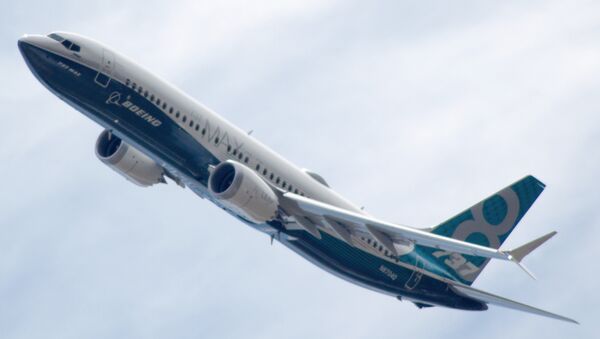Industry and government officials, cited by The Wall Street Journal, said that Chicago-based Boeing Co. knew that there was a problem with the cockpit safety alert on 737 MAX jets for a year before one of them crashed in Indonesia in October 2018. Nevertheless, it did not reportedly provide some carriers and pilots with consistent explanations even after the first tragedy and became “more forthcoming” with airlines only after the second 737 MAX crashed in Ethiopia.
The company’s recent statement on the AOA (which stands for an angle of attack) Disagree alert on 737 MAX planes has revealed that Boeing’s engineers found out in 2017 that the plane’s display system software did not meet requirements, just several months after the manufacturer started delivering the jets in question.
READ MORE: Boeing Pilots Reportedly Did Not Receive Key Details on 737 MAX Control System
The company admitted that the software activated the AOA Disagree alert, showing the AOA sensors contradict each other, only if the plane had an AOA indicator, which is designed to inform the crew if one of them is not working. However, the indicator was an optional feature for airlines.
According to Boeing’s statement, the internal review concluded that the issue “did not adversely impact airplane safety”. Senior company management is said to have become aware of the problem after the Lion Air plane crashed. At the same time, the company discussed the status of the AOA Disagree alert with the Federal Aviation Administration (FAA).
“At that time, Boeing informed the FAA that Boeing engineers had identified the software issue in 2017 and had determined per Boeing’s standard process that the issue did not adversely impact airplane safety or operation”, the company’s statement reads.
In December 2018, a Safety Review Board (SRB) confirmed that the absence of the AOA Disagree alert from certain 737 MAX flight displays did not present a safety issue, which was reported to the FAA.
These revelations add details to the company’s way of handling the situation regarding the 737 MAX’s safety issues. A recent report by The Verge claims Boeing sent its representatives to meet with airlines around the world in a last-ditch effort to reassure them about its best-selling Boeing 737 Max after the Lion Air disaster. The tactic employed by Boeing is claimed to have paid off as the company landed new orders for the plane, convincing Lion Air to keep a multi-billion dollar order.
The US aircraft manufacturer said that it has taken on $1 billion in additional costs due to the international grounding of its global 737 MAX fleet following the second deadly crash.
Following the Ethiopian Airlines crash and the October 2018 crash of a Lion Air-operated 737 MAX 8 into the Java Sea that killed in total 346 people, a number of countries, including the US, China, India, Egypt, Vietnam, and EU blocked the Boeing 737 MAX 8 from their airspace while investigations regarding the crashes are carried out.
So far, the plane's new flight control system, the Manoeuvering Characteristics Augmentation System (MCAS), has been implicated as the possible cause behind both disasters. The MCAS, initially designed as a safety feature, is supposed to evaluate sensor data and push the plane's nose down to keep it from stalling in the event that the nose is too high.


